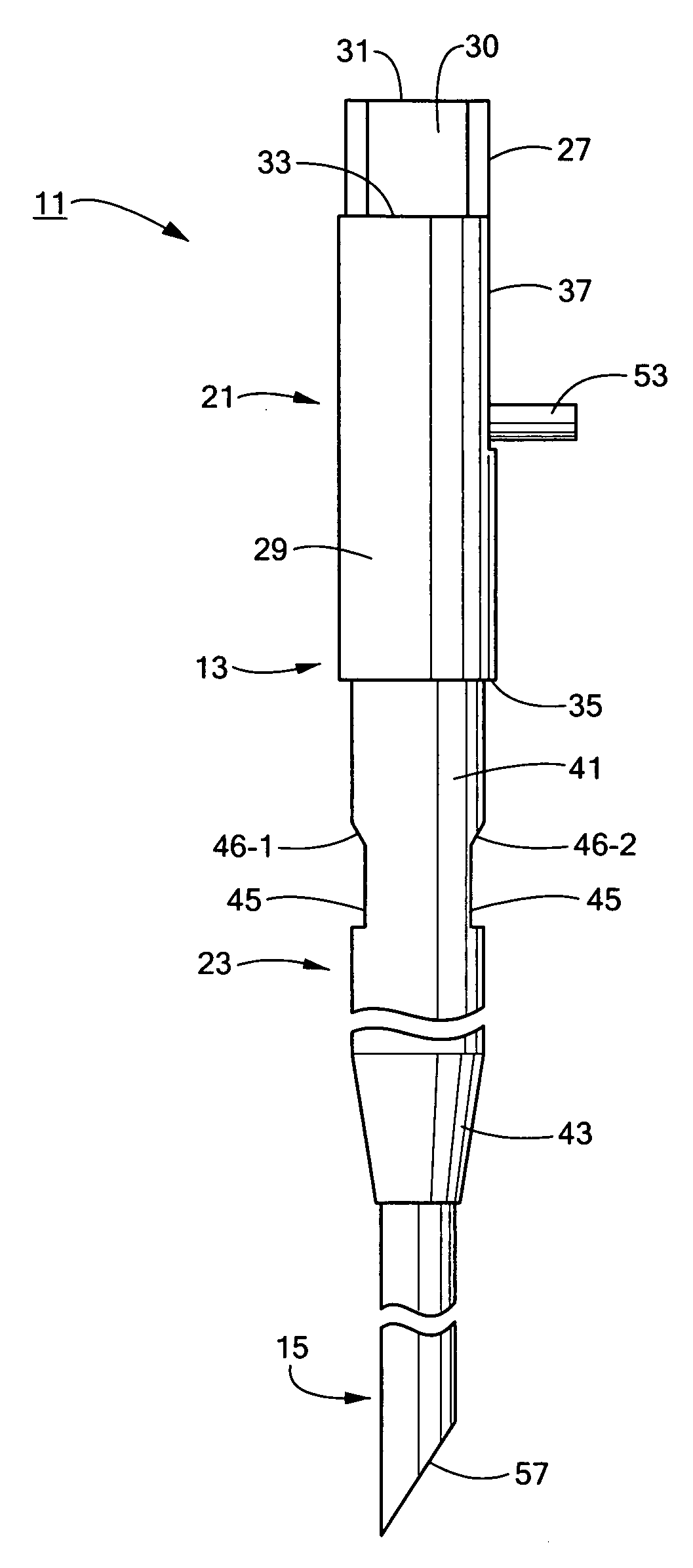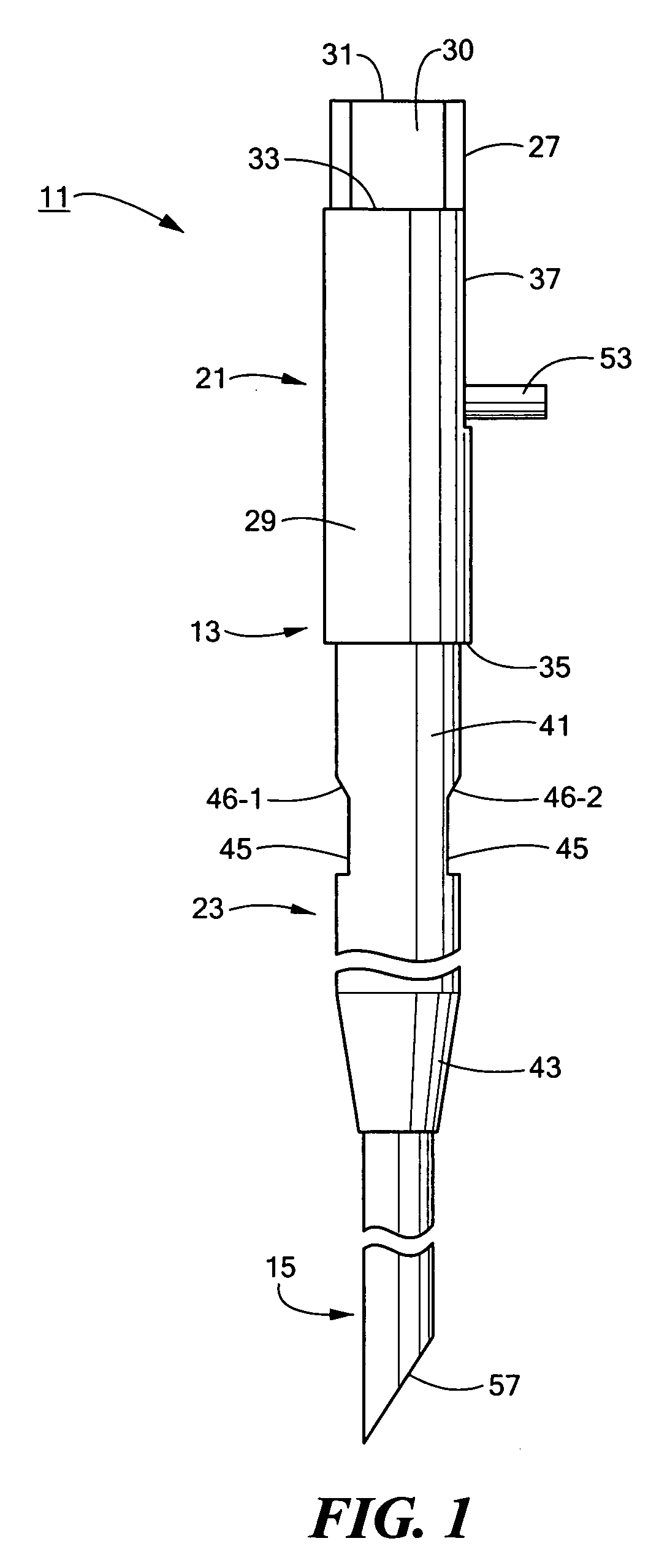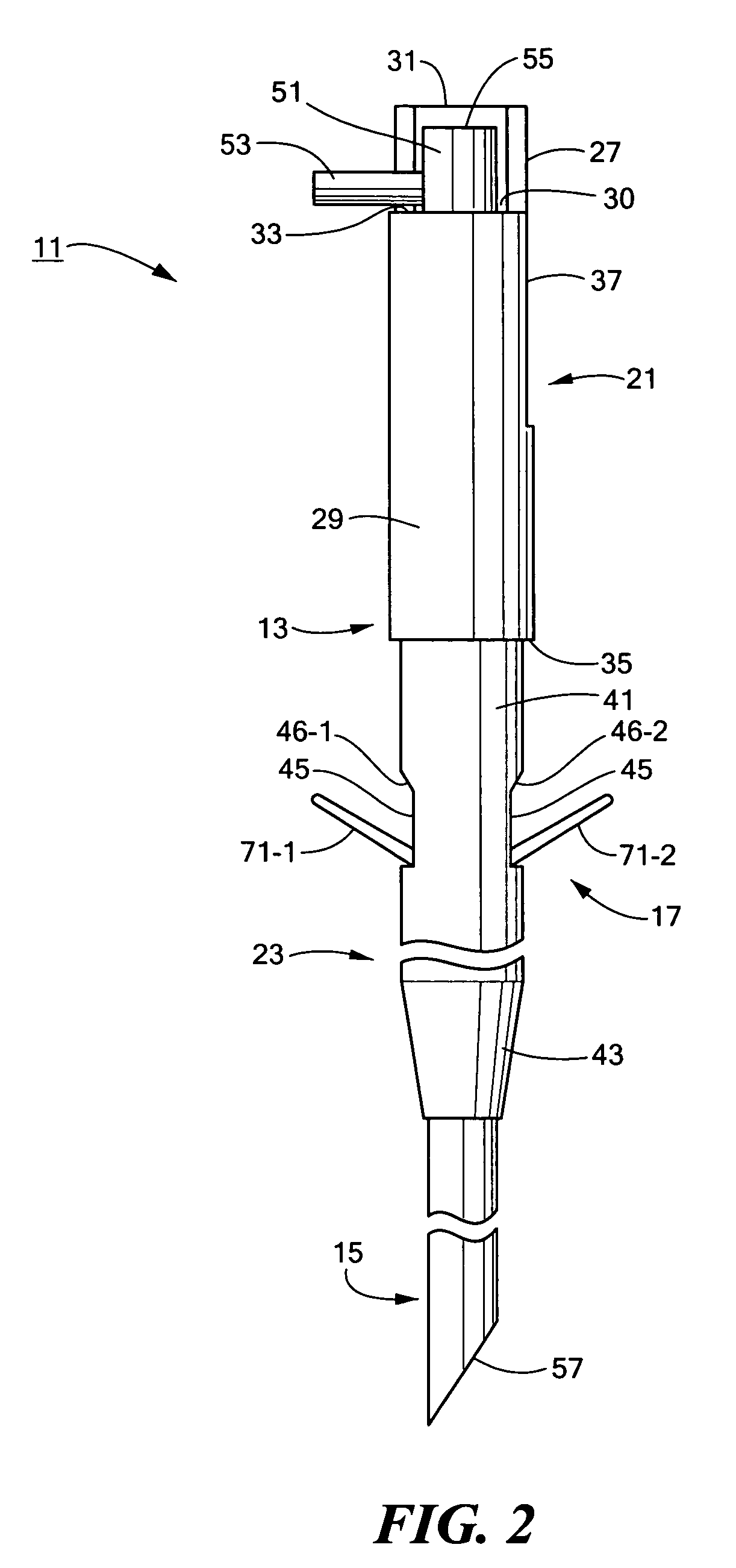Access needle well-suited for percutaneous implantation in a body lumen
- Summary
- Abstract
- Description
- Claims
- Application Information
AI Technical Summary
Benefits of technology
Problems solved by technology
Method used
Image
Examples
Embodiment Construction
[0033] Referring now to FIGS. 1 through 4, there are shown various views of one embodiment of an access needle constructed according to the teachings of the present invention, said access needle being represented generally by reference numeral 11.
[0034] Access needle 11 includes a cannula 13, a needle 15, a stopper 17 and a spreader 19.
[0035] Cannula 13, which is preferably made of a biocompatible, rigid metal, such as stainless steel, is an elongated, unitary, tubular member shaped to include a proximal portion 21 and a distal portion 23. Proximal portion 21, in turn, is shaped to include a generally semi-annular proximal section 27 and a generally annular distal section 29, proximal section 27 and distal section 29 jointly defining a longitudinally-extending lumen 30. Proximal section 27 terminates proximally at a proximal end 31. Distal section 29 terminates proximally at a proximal end 33 and terminates distally at a distal end 35. A transverse slot 37 providing access to lume...
PUM
 Login to View More
Login to View More Abstract
Description
Claims
Application Information
 Login to View More
Login to View More - R&D
- Intellectual Property
- Life Sciences
- Materials
- Tech Scout
- Unparalleled Data Quality
- Higher Quality Content
- 60% Fewer Hallucinations
Browse by: Latest US Patents, China's latest patents, Technical Efficacy Thesaurus, Application Domain, Technology Topic, Popular Technical Reports.
© 2025 PatSnap. All rights reserved.Legal|Privacy policy|Modern Slavery Act Transparency Statement|Sitemap|About US| Contact US: help@patsnap.com



